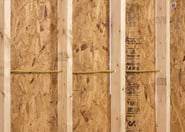You Have One Job: Insulating or Air Sealing
 One of the best ways to keep informed of building industry trends and learn insights from industry experts is reading blogs and publications. However, sometimes, these sources can leave readers confused about the fundamentals of building science, the performance of building products, and ultimately, share misleading information. Frequently, writers conflate the role of insulation and air sealing, so it’s important to examine the difference.
One of the best ways to keep informed of building industry trends and learn insights from industry experts is reading blogs and publications. However, sometimes, these sources can leave readers confused about the fundamentals of building science, the performance of building products, and ultimately, share misleading information. Frequently, writers conflate the role of insulation and air sealing, so it’s important to examine the difference.
What Insulation Does
Insulation slows heat transfer by trapping pockets of air. Modern insulation products do an excellent job of preventing heat from passing through a building’s walls, ceilings, and floors. According to Building Science Corporation’s Thermal Metric Report, all insulation types perform essentially the same as long as they are properly air sealed and installed. (We’ll get to proper installation later).
What Air Sealing Does
Air leakage control with air sealing is often misunderstood and even ignored by some insulation contractors, but it is essential to building durability, comfort, and energy efficiency. The products used in air sealing, including canned foam, caulk, tape, and gaskets all serve the purpose of stopping outside air from seeping into a structure through cracks and holes. In the typical residence, there’s roughly a mile of exterior joint area that can leak air.
Conflating Insulation and Air Sealing
Fiberglass and mineral wool insulations were designed to be insulators – not air sealing materials. These products perform well but must be properly installed and combined with an effective air barrier, and likewise, no air barrier alone can replace the need for proper insulation throughout a home. Just as importantly, no insulation product is a whole-home air sealer and insulator, even spray foam, which cannot seal critical air leakage joints such as top plates, where other materials, such as foam gaskets or tapes, would be effective.
You Can Get High Performance with Fiberglass
If you’re a regular reader of our blog, you know that we’ve shared countless stories of energy raters, building performance specialists, and builders achieving high-performance home targets using fiberglass insulation. Whether your target is 3ACH50 as required by the IECC 2012 or 2015 or even lower (such as 1.5), you can get there with proper air sealing and proper installation of insulation. The builders we’ve profiled have two commonalities: They dedicate time to training and testing and have a quality assurance point person to ensure that the process established to get to the target performance is followed.
Roughly 70 percent of new homes in America are insulated with fiberglass, and more than 30 states have adopted statewide residential energy codes that meet or exceed either the IECC 2012 or 2015, which requires blower door testing to meet 3ACH50. Builders are meeting and surpassing that target using fiberglass. Don’t let anyone tell you otherwise.





